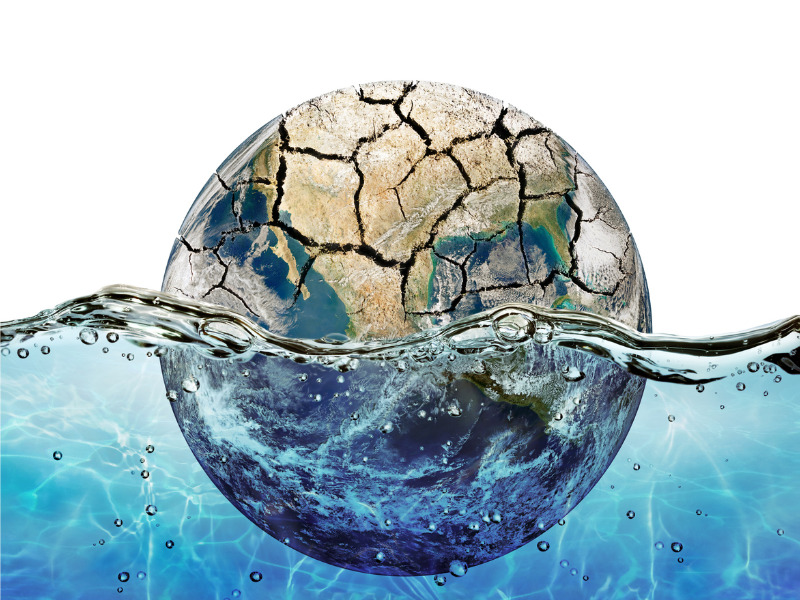
How much severe weather will cost the Canadian economy by 2050
August 29, 2022 by Jason Contant

Print this page Share
Floods, storms and droughts could result in a total loss of CAD$139 billion to Canada’s gross domestic product (GDP) between now and 2050, new research found.
Total direct losses from 2022 to 2050 are expected to reach $88 billion in Canadian dollars – $40 billion attributed to flooding, $34 billion for storms, and $14 billion for drought, according to the report from global professional services company GHD.
This equals an average annual GDP loss of 0.2% and more than $3 billion annually in economic losses, suggesting that Canadian insured losses of $2 billion and higher each year from catastrophes is indeed the ‘new normal.’
“Canada’s large land mass, combined with low population density, contributes to water risk having less of an impact than many of the other countries in the study, but there are still risks,” GHD said in a press release. “Flooding alone is expected to cost the Canadian economy over CAD$40 billion in the years leading up to 2050, making up almost half of the country’s estimated total direct losses.”
Released Monday, the report, Aquanomics: The economics of water risk and future resilience, represents the first time the economic impact of water risk has been calculated at a GDP and sector level, GHD reported.
The research combines insurance data with econometric modelling to demonstrate the wider economic impact of increased future water risk. It focuses on seven countries – Australia, Canada, China, the Philippines, United Arab Emirates, U.K. and U.S.
Besides direct losses attributed to flood, storms and drought, the study also presented the potential impact on five critical economic sectors:
- Agriculture
- Banking and insurance
- Energy and utilities
- Fast-moving consumer goods and retail
- Manufacturing and distribution.
The Canadian banking and insurance sector is projected to face total output losses of CAD$21 billion between 2022 and 2050, the report said. Manufacturing and distribution is estimated to suffer the largest total losses of CAD$64 billion by 2050. The most water-intensive industry, agriculture, faces projected losses of $4 billion by mid-century.

iStock.com/appledesign
“With the Canadian government estimating that the country is warming at double the rate of the rest of the world, a growing number of municipalities have declared climate emergencies and are implementing policies to boost resiliency,” Don Holland, GHD’s Canada water market leader, said in the release. “It is up to the water industry to help clients implement a risk-based management approach to provide the resiliency communities require to grow and thrive during these uncertain times.”
For Canada, keys to resilience include:
- Enabling predictive monitoring and maintenance of water assets
- Using data to make decisions on design, planning and infrastructure
- Investing in water infrastructure resilience.
“Canada may not be a water-stressed country, but it is a country of extremes, and these extremes are getting more pronounced,” Holland said.
Insurance industry experts agree. A 2012 report prepared by the Institute for Catastrophic Loss Reduction (ICLR) for the Insurance Bureau of Canada found Canada can expect to see warmer temperatures in the summer months by 2050, leading to an increase in wildfires, drought, water scarcity, lightning flash density and hailstorm risk.
Parts of the country will also see more intense winter storms, more freezing rain and precipitation, as well as a significant decline in sea ice cover and increased coastal erosion, wrote Gordon McBean, now-professor emeritus at Western University and research chairman at ICLR, in Telling the Weather Story.
“There is increasing evidence around the world that the frequency and severity of severe weather is on the rise,” ICLR’s report said. “In Canada, the recent spike in extreme weather-related events has resulted in social and economic consequences for individuals, governments, and home and business insurers around the country.
“Changes to the climate are likely responsible, at least in part, for the rising frequency and severity of extreme weather events in Canada, such as floods, storms and droughts, because warmer temperatures tend to produce more violent weather patterns.”
Feature image by iStock.com/Alexandrum79